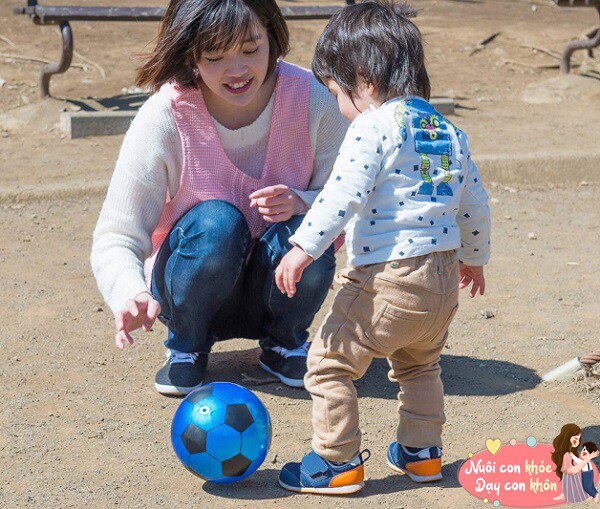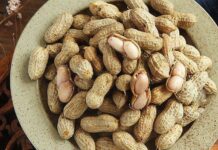From ages 3 to 6, a child’s ability to focus enters a “reader mode.” They can actively pay attention to one thing, and their frontal lobe starts constructing a “traffic light” system. However, the myelin sheath (the highway of information superhighway) is still under construction, and the brain’s messengers, like novice delivery drivers, often get lost. So, if a child can focus on playing for 10 minutes, it’s an extraordinary achievement.
Between the ages of 6 and 12, a child’s brain is equipped with a router and connected to WiFi, but the signal is unstable. For instance, when they hear cicadas outside the window while doing homework, their attention is immediately drawn to the sound, and they start to lose focus.
To put it simply, the brain’s hardware is still developing. Instead of complaining that your child can’t concentrate, it’s better to consider what might be missing from their diet. Experts suggest four types of nutrient-rich foods that can specifically “treat” all kinds of concentration issues in children.


Brain-Boosting Foods to Improve Your Child’s Focus
Low GI Foods
As we know, the brain’s sole source of energy is glucose, but the brain is picky about its fuel. Only foods that provide a steady stream of energy can satisfy the brain. Low glycemic index (GI) foods are digested slowly and release sugar gradually, providing a consistent and stable “charge” to the brain. So, if you want your child to focus better, include more of these foods in their diet.
For example, switch from white porridge to whole grain porridge for breakfast, and add a boiled egg. When cooking, mix some whole grains and beans into white rice. Your child’s blood sugar will stay stable, like an experienced driver navigating the roads, ensuring the brain continuously absorbs energy, and naturally improving their focus.
Seafood
Seafood is rich in Omega-3 fatty acids, especially DHA, the brain’s golden nutrient. It’s like installing skateboards on brain cells, allowing neural signals to move swiftly between them. When your child recites poetry and memorizes words, the brain’s messengers frantically send messages within the network, and DHA ensures each message is transmitted accurately and instantly.
Research has found that children who consume sufficient DHA over a long period show lower levels of amygdala activation when facing failure, but their prefrontal cortex can function faster. This is like switching from a “panic mode” of “Ahhhh, the ball is about to explode” to a calmer “Let me think about what to do”. When children are emotionally stable, they can naturally calm down and focus on their play and studies.
Children who eat seafood 2-3 times a week develop better concentration. If you can’t get fresh fish, dried whitebait is a good alternative.

Seafood is abundant in Omega-3 fatty acids, especially DHA, the brain’s golden nutrient.
Almonds and Walnuts
Almonds, walnuts, pumpkin seeds, and other nuts are rich in zinc and magnesium, which can suppress chaotic neural signals. Nuts also provide a strong sense of fullness and are slowly digested, helping children maintain their energy levels and improve their concentration.
When eating almonds, combine them with vitamin E-rich foods for better results. The best part is that the “crackling” sound of cracking nuts has a decompressing effect, directly reducing irritability by half.
Additionally, chewing is a rhythmic exercise that increases blood flow to the brain, enhancing focus and memory.
Fruits and Vegetables
Nutritionists always emphasize the importance of eating colorful fruits and vegetables like blueberries, strawberries, and bell peppers, as they are rich in anthocyanins and vitamin C.
Due to air pollution and screen time, children’s brains must combat a high number of free radicals. The antioxidants in these fruits and vegetables act as a protective layer for brain nerves, especially the frontal lobe, which is responsible for commanding children to “restrain and not move.” The brighter the color of the produce, the higher its antioxidant value.

Other Ways to Help Your Child Develop Focus

Brain Games
Puzzles, word games, and strategy games help develop a child’s focus and logical thinking. For example, when doing a jigsaw puzzle, children must pay attention to each piece, figuring out how they fit together to form a complete picture. This process requires keen observation and analysis of the shape and color of each piece, thus training their concentration.
Creative Activities
Drawing, coloring, and crafts are fantastic ways to help children focus on a specific task. These activities encourage imagination and creativity while fostering patience and concentration. When a child sits down with a blank sheet of paper and a set of colors, they must decide on the image they want to create, choose the right colors, and plan each stroke.
Physical Activities
Games like hopscotch, badminton, and ball sports engage and excite children while developing their attention and reflexes. For instance, in hopscotch, children must maintain their balance and focus on each hop, improving hand-eye coordination. As they jump through the squares, they observe and calculate distances, honing their concentration and quick reflexes.
Similarly, in ball games, children must focus on the ball and their teammates, always ready to react to unexpected situations. Running, passing, and scoring require intense concentration and well-coordinated senses.

Ball games require children to focus and react quickly to unexpected situations.
Give Children a Sense of Agency
Involve your children in planning daily activities. When they feel responsible, they will be more self-disciplined and focused on their tasks. Letting them choose and arrange their favorite activities will spark their enthusiasm and motivate them to complete their work.
For example, they can learn to manage their time effectively between studying, playing, and contributing to family chores.







































